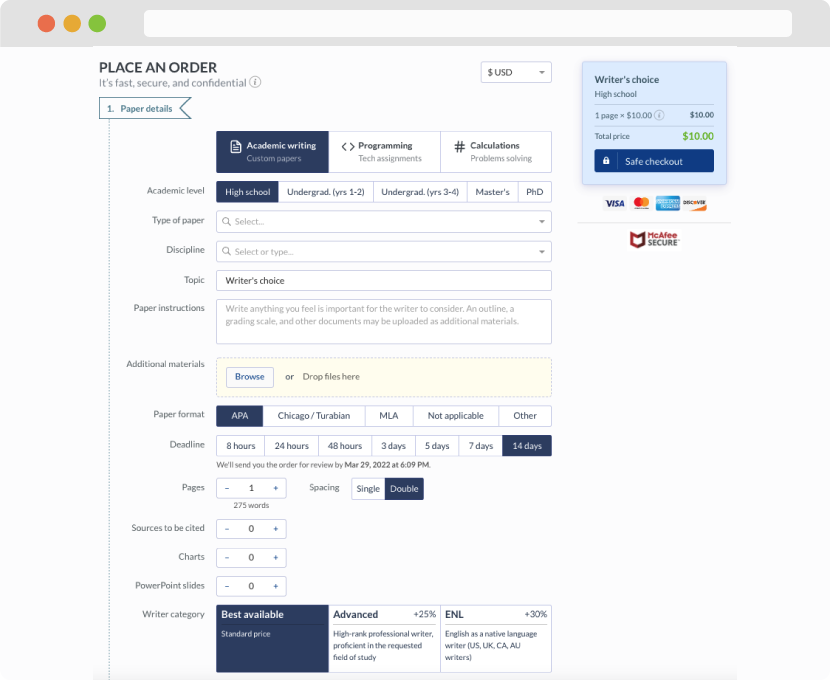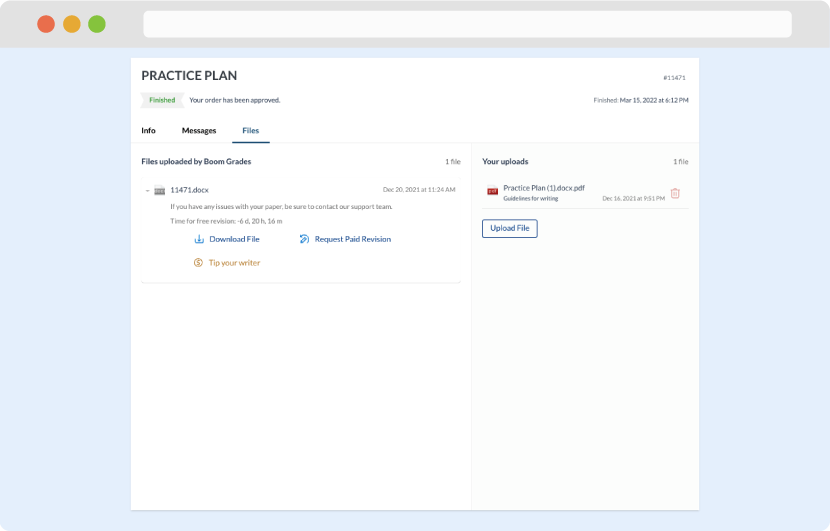Read chapter 20 of the class textbook and review the attached PowerPoint presentation. Once done answer the following questions;
1. In your own word and using the appropriate evidence-based references define family and describe the different types of family.
2. Identify characteristics of the family that have implications for community health nursing practice.
3. Discuss a model of care for families.
4. Describe strategies for moving from intervention at the family level to intervention at the aggregate level.
Chapter 20
Family Health
Copyright © 2015, 2011, 2007, 2001, 1997, 1993 by Saunders, an imprint of Elsevier Inc.
Working with Families
Working with families has never been more
complex or rewarding than now.
Nurses understand the actual and potential
impact that families have in changing the
health status of individual family members,
communities, and society as a whole.
Families have challenging health care needs
that are not usually addressed by the health
care system.
.
Copyright © 2015, 2011, 2007, 2001, 1997, 1993 by Saunders, an imprint of Elsevier Inc.
2
How Do You Define a Family?
Copyright © 2015, 2011, 2007, 2001, 1997, 1993 by Saunders, an imprint of Elsevier Inc.
3
Definitions of a Family
Historical definitions:
The environment
affecting individual
clients
Small to large groups of
interacting people
A single unit of care with
definable boundaries
A unit of care within a
specific environment of
a community or society
Current theorists:
Two or more individuals
who depend on one
another for emotional,
physical, and economic
support. Members of
family are self-defined.
– Hanson & Kaakimen (2005)
The family is who they
say they are.
– Wright & Leahey (2000)
Copyright © 2015, 2011, 2007, 2001, 1997, 1993 by Saunders, an imprint of Elsevier Inc.
4
Inclusive Definitions of Family
“Family” means any person(s) playing a significant role
in an individual’s life. This may include person(s) not
legally related to the individual. Members of “family”
include spouses, domestic partners, and both differentsex and same-sex significant others. “Family” includes a
minor patient’s parents, regardless of gender of either
parent … without limitation as encompassing legal
parents, foster parents, same-sex parent, step-parents,
those serving in loco parentis, and others operating in
caretaker roles.
– Human Rights Campaign ( 2009)
Copyright © 2015, 2011, 2007, 2001, 1997, 1993 by Saunders, an imprint of Elsevier Inc.
5
The Changing Family
Purposes of the family
➢
➢
To meet the needs of society
To meet the needs of individual family members
Examples of different family types
➢
Traditional, nuclear family
➢ Multigenerational family household
➢ Cohabitating families
➢ Single-parent families
➢ Grandparent-headed families
➢ Gay or lesbian families
➢ Unmarried teen mothers
Copyright © 2015, 2011, 2007, 2001, 1997, 1993 by Saunders, an imprint of Elsevier Inc.
6
The “Sandwich” Generation
Figure 20-1 From Pew Research Center: Social and Demographic Trends: The Sandwich
Generation. http://www.pewsocialtrends.org/2013/01/30/the-sandwich-generation/. Accessed March
15, 2013.
Copyright © 2015, 2011, 2007, 2001, 1997, 1993 by Saunders, an imprint of Elsevier Inc.
7
Why Is It Important for the CHN to
Work with Families?
The family is a critical resource.
Any dysfunction in a family unit will affect the
members and the unit as a whole.
Case finding can identify a health problem
that leads to risks for the entire family.
Nursing care can be improved by providing
holistic care to the family and its members.
– Friedman, Bowden, & Jones (2003)
Copyright © 2015, 2011, 2007, 2001, 1997, 1993 by Saunders, an imprint of Elsevier Inc.
8
Approaches to Meeting the Health
Needs of Families
Moving from
the Individual
to the Family
Moving from
the Family to
the
Community
Copyright © 2015, 2011, 2007, 2001, 1997, 1993 by Saunders, an imprint of Elsevier Inc.
9
Moving from the Individual to the
Family
Family interviewing
➢
Manners
➢ Therapeutic conversations
➢ Genogram and Ecomap
➢ Therapeutic questions
➢ Commending family or individual strengths
➢ Issues in family interviewing
• Many locations, family informant, family health portrait,
involvement of children
Intervention in cases of chronic illness
Copyright © 2015, 2011, 2007, 2001, 1997, 1993 by Saunders, an imprint of Elsevier Inc.
10
Moving from the Family to the
Community
The health of communities is measured by
the well-being of its people and families.
Families are components of communities.
Cross-comparison of communities must
include health needs as well as resources.
Cross-compare the needs of the families
within the community and set priorities.
Delegation of scarce resources is essential.
A double standard in public health is
tolerated.
Copyright © 2015, 2011, 2007, 2001, 1997, 1993 by Saunders, an imprint of Elsevier Inc.
11
Family Theory Approach
1. Any “dysfunction” that affects one member will
probably affect others and the family as a whole.
2. The family’s wellness is highly dependent on the role
of the family in every aspect of health care.
3. The level of wellness of the whole family can be
raised by reducing lifestyle and environmental risks
by emphasizing health promotion, self-care, health
education, and family counseling.
Copyright © 2015, 2011, 2007, 2001, 1997, 1993 by Saunders, an imprint of Elsevier Inc.
12
Family Theory Approach (Cont.)
4. Commonalities in risk factors and diseases
shared by family members can lead to case
finding within family.
5. Individual is assessed within larger context of
family.
6. Family is vital support system to individual
member.
– Friedman (1994)
Copyright © 2015, 2011, 2007, 2001, 1997, 1993 by Saunders, an imprint of Elsevier Inc.
13
Systems Theory Approach
The family as a unit interacts
with larger units outside the
family (suprasystem) and with
smaller units inside the family
(subsystem).
– Friedman (1998)
Copyright © 2015, 2011, 2007, 2001, 1997, 1993 by Saunders, an imprint of Elsevier Inc.
14
Healthy Families
Members interact with each other; listen and
communicate repeatedly in many contexts.
Healthy families establish priorities. Members
understand that family needs are the priority.
Healthy families affirm, support, and respect each
other.
Members engage in flexible role relationships, share
power, respond to change, support the
growth/autonomy of others, and engage in decision
making that affects them.
– DeFrain (1999) and Montalvo (2004)
Copyright © 2015, 2011, 2007, 2001, 1997, 1993 by Saunders, an imprint of Elsevier Inc.
15
Healthy Families (Cont.)
The family teaches family and societal values and
beliefs and shares a religious core.
Healthy families foster responsibility and value
service to others.
Healthy families have a sense of play and humor and
share leisure time.
Healthy families have the ability to cope with stress
and crisis and grow from problems. They know when
to seek help from professionals.
– DeFrain (1999) and Montalvo (2004)
Copyright © 2015, 2011, 2007, 2001, 1997, 1993 by Saunders, an imprint of Elsevier Inc.
16
Structural-Functional Conceptual
Framework
Internal structure
➢
External structure
➢
➢
Family composition, gender, rank order, functional
subsystem, and boundaries
Extended family and larger systems (work, health, welfare)
Context: ethnicity, race, social class, religion, environment
Instrumental functioning (routine ADLs)
Expressive functioning
➢
Emotional, verbal, nonverbal, circular communication;
problem solving; roles; influence; beliefs; alliances and
coalitions
Copyright © 2015, 2011, 2007, 2001, 1997, 1993 by Saunders, an imprint of Elsevier Inc.
17
Developmental Theory
Family life cycle (Duvall & Miller,
1985)
➢
➢
➢
➢
➢
➢
➢
Leaving home
Beginning family through marriage or
commitment as a couple relationship
Parenting the first child
Living with adolescent
Launching family (youngest child leaves
home)
Middle-age family (remaining marital
dyad to retirement)
Aging family (from retirement to death of
both spouses)
Copyright © 2015, 2011, 2007, 2001, 1997, 1993 by Saunders, an imprint of Elsevier Inc.
18
Family Health Assessment Tools
Genogram
➢
Family health tree
➢
A tool that helps the nurse
outline the family’s
structure
Family’s medical and
health histories
Ecomap
➢
Depicts a family’s linkages
to their suprasystems
Copyright © 2015, 2011, 2007, 2001, 1997, 1993 by Saunders, an imprint of Elsevier Inc.
19
Family Health Assessment Tools
Family Health Assessment
➢
Addresses family characteristics,
including structure and process and
family environment
➢ Information obtained through
interviews with one or more family
members, subsystems within the
family, or group interviews of more
than two members of the family
➢ Additional information obtained
through observation of family and
their environment
Copyright © 2015, 2011, 2007, 2001, 1997, 1993 by Saunders, an imprint of Elsevier Inc.
20
Genogram
Figure 20-2 Redrawn from Genopro Software: Symbols used in genograms, 2009: www.genopro.com.
Copyright © 2015, 2011, 2007, 2001, 1997, 1993 by Saunders, an imprint of Elsevier Inc.
21
Ecomap
Figure 20-4 Redrawn from Hartman A: Diagrammatic assessment of family relationships, Soc
Casework 59:496, 1978.
Copyright © 2015, 2011, 2007, 2001, 1997, 1993 by Saunders, an imprint of Elsevier Inc.
22
Social and Structural Constraints
Identify what prevents families from receiving
needed health care or achieving a state of
health
Usually based on social and economic
causes
➢
➢
➢
Literacy, education, employment
If disadvantaged, often unable to buy health care
from private sector
Hours of service, distance and transportation,
availability of interpreters, and criteria for receiving
services (age, sex, income barriers)
Copyright © 2015, 2011, 2007, 2001, 1997, 1993 by Saunders, an imprint of Elsevier Inc.
23
Family Health Interventions
Institutional context of family therapists
➢
➢
➢
Ecological framework: A blend of systems and
developmental theory that focus on the interaction
and interdependence of families within the context
of their environment
Social Network Framework: Involves all
connections and ties within a group; social support
Transactional model: A system that focuses on
process as opposed to a linear approach
Copyright © 2015, 2011, 2007, 2001, 1997, 1993 by Saunders, an imprint of Elsevier Inc.
24
Applying the Nursing Process
Knowledge of self, previous life experiences,
and values is crucial in planning home visits
Gather referral information, review
assessment forms, and gather intervention
tools (e.g., screening materials, supplies)
before going to the home
Flexibility is important in working with families
Copyright © 2015, 2011, 2007, 2001, 1997, 1993 by Saunders, an imprint of Elsevier Inc.
25
Essay Writing Service Features
Our Experience
No matter how complex your assignment is, we can find the right professional for your specific task. Achiever Papers is an essay writing company that hires only the smartest minds to help you with your projects. Our expertise allows us to provide students with high-quality academic writing, editing & proofreading services.
Free Features
Free revision policy
$10Free bibliography & reference
$8Free title page
$8Free formatting
$8How Our Dissertation Writing Service Works

First, you will need to complete an order form. It's not difficult but, if anything is unclear, you may always chat with us so that we can guide you through it. On the order form, you will need to include some basic information concerning your order: subject, topic, number of pages, etc. We also encourage our clients to upload any relevant information or sources that will help.
Complete the order form
Once we have all the information and instructions that we need, we select the most suitable writer for your assignment. While everything seems to be clear, the writer, who has complete knowledge of the subject, may need clarification from you. It is at that point that you would receive a call or email from us.
Writer’s assignment
As soon as the writer has finished, it will be delivered both to the website and to your email address so that you will not miss it. If your deadline is close at hand, we will place a call to you to make sure that you receive the paper on time.
Completing the order and download